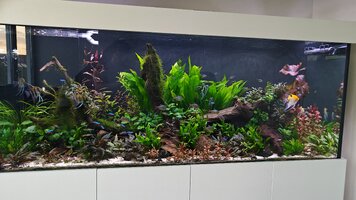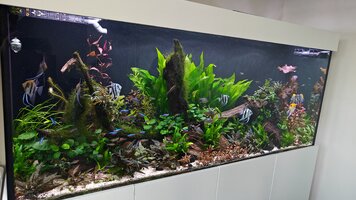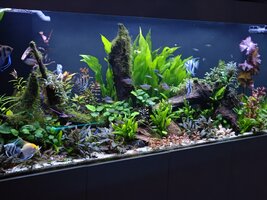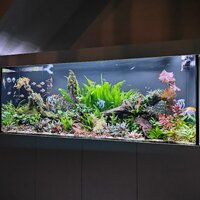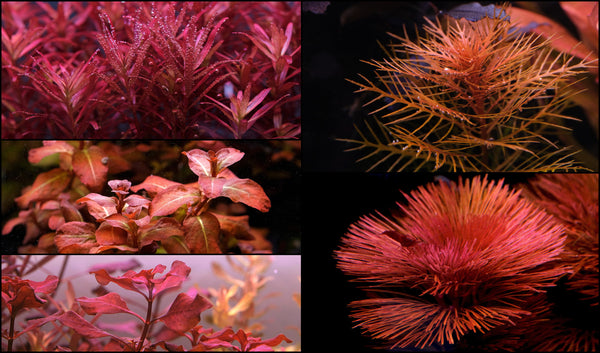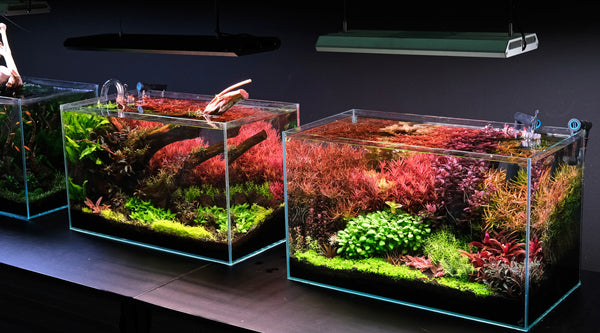Was confronted by someone that with reference to this thread said the the inverse square law does not apply to aquarium lights. I helped them understand (or at least I hope that they in the end got it) the limitations of the inverse square law and why it to some degree can be used on aquarium lights.
My hope is that the following will help you understand a bit more as to why you are getting the seemingly odd measurements...
The inverse square law is a law based on an ideal situation where you have a point source radiating uniformly across a sphere. You then have a reading of the amount of radiation that is passing through a section of the sphere at a given distance L from the point source. Assuming that the radiation moving out from the point source is not being absorbed nor reflected, you can then calculate the amount of radiation passing through a given area at distances, r, greater than L. The relation is derived from the formula giving us the area of a sphere is 4*π*r^2.
As we are assuming that all the radiation is conserved, we then get the inverse square law.
Now in the real world we do not have any point sources, but if we are far enough away from the source we can within reason say that it is a point source. That is not the case with any of the lights we are using for aquariums, so we have to make additional calculations (or you discover that your time is far to valuable to sit and play with ray tracing programs and buy a PAR meter)=(1).
Seeing that most people these days are using LED, we can start by looking at them:
LEDs are probably the closest source we have in the hobby to a point source (until you have an array of them), but looking at the inverse square law we already notice a problem with calculations involving LEDs as they do not emit the light uniformly over a sphere, so we have to adjust the law to include the emitting angle (for most LEDs that is 120 degrees). This means that the light falls off as a slower rate than suggested by the unmodified inverse square law, and the smaller the emitting angle the slower the light falls off.
The other thing that makes the measurements more complex is the fact that almost non of the lights consists of just one LED, it is many LEDs in some configuration, so now you are far from looking at a point source which then takes us back to (1).
If we start including reflectors the picture gets even more muddled, and I will leave that to the next section.
The other main type of lights used are incandescent lights and the more traditional fluorescent lights.
They are much closer to emitting the light spherically (tubes do 360 degrees, but are obviously elongated) but are again far from point sources. They are however fairly close to following the unmodified inverse square law as long as the light is not being redirected by reflectors. But most lights of this type do have reflectors and depending on the geometry of the deflector we can then to some degree look at them as being a mix of a point source and what was described above in the LED part of this post, but in the end it brings us back to (1).
As you might have guess looking at a setup with multiple light sources will again bring us back to (1).
As a quick few mental exercises I would like people to consider why this focus on getting the right PAR with a given light, most of the time, ignores the ambient light in the room. Is this not important? and if so, why is hunting the perfect PAR from a light source you are adding on top of an unknown background important?
Why is PAR meaningless without some knowledge of the spectral power distribution in relation to what the plants need?
TLDR: The Inverse square law does work, but for our applications of light, just look at the manufactures spec sheets, get a PAR meter, or just look at how the plants are growing. People in the hobby made it work way before some of use made it more complicated than it needs to be.


